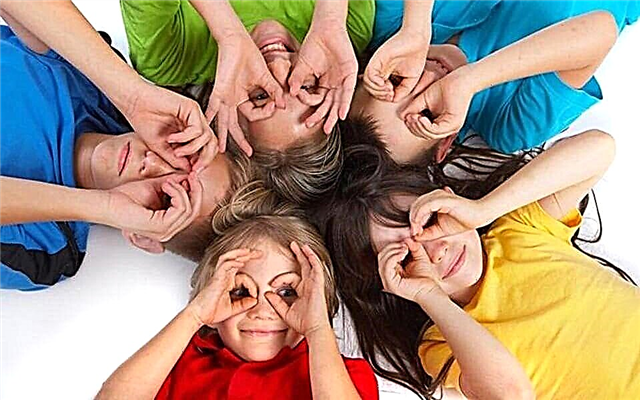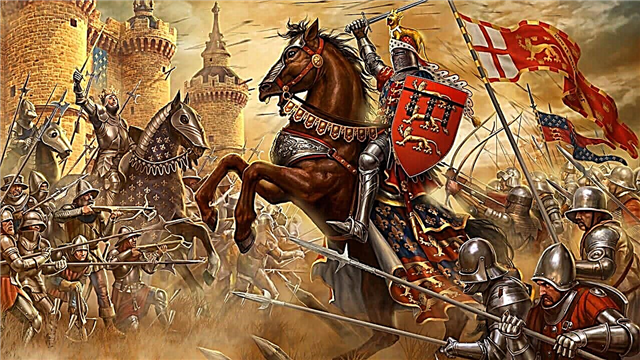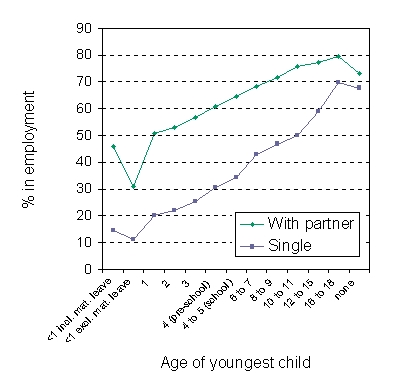For most children and adults, Christmas is a time of joy and long-awaited gifts. However, in Europe there are certain traditions that hint at the darker past of the holiday. Europeans have traditionally associated Christmas time with gloomy folklore creatures. Introducing you top 7 mysterious and gloomy Christmas related stories.
7. Christmas and werewolves
 According to the beliefs of Central and Southern Europe, children born at Christmas can become werewolves. Why? Because they were born on the same day as Jesus Christ, and this was considered as sacrilege in relation to the Son of God. In his famous novel The Werewolf in Paris, Guy Endor recalled this legend. The hero of his book was born just at Christmas.
According to the beliefs of Central and Southern Europe, children born at Christmas can become werewolves. Why? Because they were born on the same day as Jesus Christ, and this was considered as sacrilege in relation to the Son of God. In his famous novel The Werewolf in Paris, Guy Endor recalled this legend. The hero of his book was born just at Christmas.
6. Holda
 Also known as Hall and Hall, Holda is a Germanic goddess who can be found in the folklore of Scandinavia, Northern Germany and the alpine regions of Bavaria, Austria, Switzerland and South Tyrol. According to legend, Holda spends the nights between Christmas and the Epiphany traveling on a wagon or riding a horse as a participant in the Wild Hunt. It is believed that she leads the souls of unbaptized infants and those who are not yet ready to go to heaven, that is, pagans and witches. “Drive from the Hall” means a walk with the witch.
Also known as Hall and Hall, Holda is a Germanic goddess who can be found in the folklore of Scandinavia, Northern Germany and the alpine regions of Bavaria, Austria, Switzerland and South Tyrol. According to legend, Holda spends the nights between Christmas and the Epiphany traveling on a wagon or riding a horse as a participant in the Wild Hunt. It is believed that she leads the souls of unbaptized infants and those who are not yet ready to go to heaven, that is, pagans and witches. “Drive from the Hall” means a walk with the witch.
5. Krampus
 Thanks to the Internet, comic books and horror films, there has been a flash of interest in this demonic assistant of St. Nicholas.
Thanks to the Internet, comic books and horror films, there has been a flash of interest in this demonic assistant of St. Nicholas.
In East Tyrol and the German-speaking regions of South Tyrol, Krampus is an ugly and hairy creature that children can call on the eve of St. Nicholas Day. Waking up, Krampus follows St. Nicholas, but if the latter gives good children, then Krampus punishes the bad. He either puts coal under his pillow, or puts it in a bag and carries it to the cave. It is believed that Krampus uses the kidnapped child as his main dish at his Christmas dinner. Do not be naughty!
4. Frau Percht
 Another pagan German goddess, included in our rating of amazing Christmas stories. Her day was considered the Twelfth Night (January 6). Frau Perchty's favorite dishes are fish and cereals. For those who eat something else on her holiday, the capricious goddess could stuff their bellies with straw.
Another pagan German goddess, included in our rating of amazing Christmas stories. Her day was considered the Twelfth Night (January 6). Frau Perchty's favorite dishes are fish and cereals. For those who eat something else on her holiday, the capricious goddess could stuff their bellies with straw.
To appease Perkht, it was recommended to leave her milk or porridge. Perhaps this has a connection with the tradition of leaving milk and cookies for Santa Claus.
3. Yule cat
 On the fourth place of our terrible hit parade is a creature whom children in Iceland are afraid of. The Yolsky cat wanders at nights during Yule (Christmas time) and punishes those who did not purchase new woolen clothes for Christmas. He is described as a giant black furry beast that reminds Icelanders of the need to work hard throughout the coming year. After all, whoever works can afford a new thing. And who does not work, that Yolsky cat will eat. He especially likes to feast on lazy and naughty children. There is a more humane version of the story, according to it the Yolsky beast does not eat children, but a festive treat. But the cat gives gifts to good children.
On the fourth place of our terrible hit parade is a creature whom children in Iceland are afraid of. The Yolsky cat wanders at nights during Yule (Christmas time) and punishes those who did not purchase new woolen clothes for Christmas. He is described as a giant black furry beast that reminds Icelanders of the need to work hard throughout the coming year. After all, whoever works can afford a new thing. And who does not work, that Yolsky cat will eat. He especially likes to feast on lazy and naughty children. There is a more humane version of the story, according to it the Yolsky beast does not eat children, but a festive treat. But the cat gives gifts to good children.
2. St. Thomas
 By right, the Austrian story of St. Thomas takes the second place in the list of the most terrible legends associated with Christmas. It doesn’t matter if you behaved well all year or were a notorious villain, Thomas punishes everyone. This man with a long beard, divided into two halves, came on December 21 with the onset of darkness. If the door to the house was open, Thomas entered the house, silently examined its inhabitants and pointed to one of them. The name of the poor fellow was now recorded in the Book of Death and until the next New Year he was not destined to survive. However, Thomas could be appeased by offering him special cookies. And so that he did not go into the house outside the door, it was necessary to put crossed forks or brooms. But the barn doors from St. Thomas did not lock so that there was a good harvest, because he was kinder to vegetation than to people.
By right, the Austrian story of St. Thomas takes the second place in the list of the most terrible legends associated with Christmas. It doesn’t matter if you behaved well all year or were a notorious villain, Thomas punishes everyone. This man with a long beard, divided into two halves, came on December 21 with the onset of darkness. If the door to the house was open, Thomas entered the house, silently examined its inhabitants and pointed to one of them. The name of the poor fellow was now recorded in the Book of Death and until the next New Year he was not destined to survive. However, Thomas could be appeased by offering him special cookies. And so that he did not go into the house outside the door, it was necessary to put crossed forks or brooms. But the barn doors from St. Thomas did not lock so that there was a good harvest, because he was kinder to vegetation than to people.
1. La Befana
 Christmas witch with a hooked nose, dressed in holey stockings, a long cloak and a pointed hat. She flies on a broomstick on January 6 (Day of the Epiphany of the Epiphany), La Befana gives gifts to well-bred boys and girls.
Christmas witch with a hooked nose, dressed in holey stockings, a long cloak and a pointed hat. She flies on a broomstick on January 6 (Day of the Epiphany of the Epiphany), La Befana gives gifts to well-bred boys and girls.
Instead of a present for the “bad guys”, La Befana throws coal into a chimney or stuffs with coal a stocking suspended on a Christmas tree. Italian parents warn their tricks and pranks that if they behave badly, La Befana will take them with them.
In many ways, La Befana plays the same role as St. Nicholas and Krampus “in one bottle”.
There is a tradition that La Befana is associated with three magicians. She provided the sages with shelter and food, but refused to go look at the baby Christ, because she has too much housework. Then La Befana changed her mind, but could not find either Jesus or the Magi. So now flies around the world in their search.












